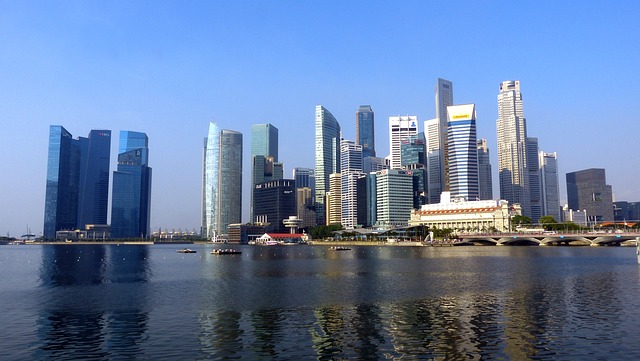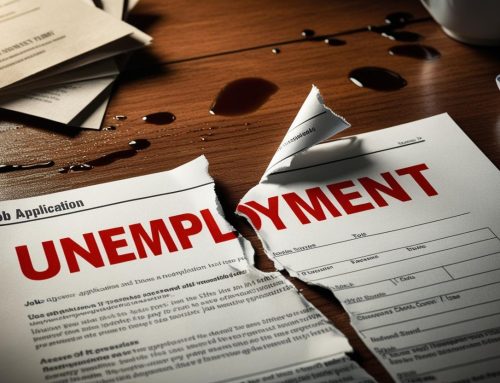July 26, 2023
Singapore’s advance estimate for second quarter GDP for 2023 showed weak expansion at a pace of 0.7% year-on-year (y/y), albeit slightly higher than the 0.4% y/y GDP growth rate in the first quarter of 2023. Economic growth momentum has slowed significantly compared with annual GDP growth of 3.6% in 2022. A key factor driving the slowdown of economic growth in the first half of 2023 has been declining manufacturing output, which fell by 7.5% y/y in Q2 2023.
The near-term outlook is expected to remain constrained by weak demand in several important export markets for manufactures, notably the US and European Union (EU), with the pace of recovery in mainland China also weak. The service sector economy is expected to be more resilient, boosted by the continued recovery of international tourism travel in the APAC region.
Singapore economy weakens in first half of 2023
According to the advance estimate for Q2 2023 GDP released by Singapore’s Ministry of Trade and Industry (MTI), Singapore’s GDP growth rate was 0.7% y/y, improving on the 0.4% y/y pace in Q1 2023, but much weaker than the 3.6% annual GDP growth rate achieved in 2022.
Manufacturing output fell by 7.5% y/y in Q2 2023, following a decline of 5.3% y/y in Q1 2023. Manufacturing output also fell by 1.3% quarter-on-quarter (q/q) in Q2 2023, after a contraction of 4.5% q/q in Q1 2023.

The construction sector was a bright spot amongst the goods-producing industries, with output up by 6.6% y/y in Q2 2023, after strong growth on 6.9% y/y in Q1 2023 and of 6.7% y/y in calendar 2022.
The service sector also showed positive growth of 3.0% y/y in Q2 2023, with output up 1.3% q/q. The removal of many COVID-19 restrictions since April 2022 and improving tourism flows supported buoyant growth in the accommodation and food services, real estate, administration and support services segment, which grew by 6.1% y/y in Q2 2023.
International tourism has rebounded, with international visitor arrivals having risen to 1.13 million in April and 1.1 million in May 2023, helped by strong tourism inflows from other APAC nations, notably Indonesia, Malaysia, India and Australia. The number of visitor arrivals in May 2023 was 2.6 times higher than a year ago, with only 418,000 arrivals in May 2022.
The headline seasonally adjusted S&P Global Singapore Purchasing Manager’s Index (PMI) fell to 54.1 in June from 54.5 in May. The reading continued to signal expansion for Singapore’s private sector, albeit slower than in May. Driving the latest private sector expansion was a sustained improvement in new orders. However, export orders remained subdued, registering a mild contraction in the latest survey period.

Manufacturing sector slowdown continues in early 2023
Latest statistics from Singapore’s Economic Development Board (EDB) showed that manufacturing output continued to weaken in May 2023, declining by 10.8% y/y and by 3.9% month-on-month (m/m). This sharp downturn reflected contraction in output of electronics, chemicals and precision engineering. Electronics output fell by 23.0% y/y while precision engineering output fell by 10.5% y/y. Chemicals output contracted by 9.5% y/y, due to a combination of weak demand and plant maintenance shutdowns.
However, transport engineering showed strong growth of 28.4% y/y, helped by a 31.5% y/y rise in output of the marine and offshore engineering sector, while aerospace engineering was up 35.9% y/y.

Reflecting the weakness of manufacturing sector new orders since mid-2022, Singapore’s non-oil domestic exports (NODX) fell by 15.5% y/y in June, following a 14.8% y/y contraction in May, according to latest data released by Enterprise Singapore.
Inflation pressures have eased
According to the February S&P Global Singapore PMI survey, price pressures further eased across the Singaporean private sector. Overall input cost inflation descended due to slower purchase price and wage increases, which rose at the weakest paces since November 2021 and March 2023 respectively. This led to private sector firms raising their output prices at the most moderate pace in just over two years.

Singapore’s CPI inflation rate moderated to 5.1% y/y in May from 5.7% y/y in April. The Monetary Authority of Singapore (MAS) core inflation measure fell to 4.7% y/y in May, from 5.0% in April.
The MAS and MTI estimate that for calendar 2023, taking into account the 1% increase in GST that took effect on 1st January 2023, headline and core CPI inflation are projected to average 5.5%-6.5% and 3.5%-4.5% respectively.
Headwinds from moderating global electronics demand
The electronics manufacturing industry is a key segment of Singapore’s manufacturing sector, accounting for 40% of the total weight of manufacturing output, dominated by semiconductors-related production. S&P Global survey data since mid-2022 indicates that the global electronics manufacturing industry is continuing to face headwinds from the weak pace of global economic growth.
The headline seasonally adjusted S&P Global Electronics PMI posted 47.6 in June, down slightly from 47.9 in May to signal continued contraction in the global electronics sector.
Weakening global economic growth momentum has impacted on consumer demand for electronics, with soft demand in mainland China also contributing to the downturn in new orders.
Singapore’s electronics output fell by 23.0% y/y in May, with electronics output down by 11.0% y/y in the first five months of 2023. Semiconductors output, which accounts for the largest share of total electronics production in Singapore, fell by 26.8% y/y in May.
Singapore’s non-oil domestic exports of electronics continued to show sharp declines in June 2023, falling by 15.4% y/y according to exports data released by Enterprise Singapore. Exports of integrated circuits fell by 31.8% y/y, while exports of PCs fell by 41.6% y/y. Demand for electronics exports has remained weak in key Asian markets, with exports of electronics to mainland China having declined by 17.1% y/y in June, while exports to South Korea fell by 56.7% y/y.

Singapore’s economic outlook
After a second year of rapid economic recovery from the pandemic in 2022, economic growth momentum has moderated significantly in the first half of 2023. GDP growth is forecast to slow to 1.4% in 2023, after growing at 3.6% in 2022 and 8.9% y/y in 2021. According to the June 2023 Survey of Professional Forecasters produced by the MAS, the median GDP forecast for 2023 is for growth of 1.4%, significantly lower than the forecast from the March 2023 Survey, which was for GDP growth of 1.9% in 2023.
With continuing headwinds to global growth momentum in 2023 due to very weak growth in the US and EU and sluggish economic recovery in mainland China, the outlook for Singapore’s manufacturing sector remains challenging. However, stronger exports of services, notably due to rising international tourist arrivals, will help to mitigate the impact of weaker growth in manufacturing exports.
The increase in Singapore’s Goods and Services Tax (GST) by 1% from 7% to 8% implemented on 1st January 2023 will also act as a slight drag on economic growth in 2023, raising fiscal revenue by an estimated 0.7% of GDP per year. Singapore’s Ministry of Trade and Industry has maintained its GDP growth forecast for 2023 in the range of 0.5% to 2.5%.
In 2023, taking into account the 1% increase in GST from 1st January 2023, headline and core CPI inflation are projected to average 5.5%-6.5% and 3.5%-4.5% respectively. MAS core inflation is projected by the MAS and MTI to remain elevated over the next few quarters, with risks still tilted to the upside, due to factors such as potential renewed shocks to world commodity prices and persistent global inflation pressures. Although prices of energy and food commodities have eased from their peaks, businesses will face higher utility prices and rising unit labour costs in the near-term. The MAS and MTI expect that MAS Core Inflation will moderate in the second half of 2023, as tightness in the domestic labour market eases and global inflation pressures moderate.
The medium-term outlook for Singapore’s manufacturing sector is supported by a number of positive factors.
Despite near-term headwinds, medium-term prospects for Singapore’s electronics industry remains favourable. The outlook for electronics demand is underpinned by major technological developments, including 5G rollout over the next five years, which will drive demand for 5G mobile phones. Demand for industrial electronics is also expected to grow rapidly over the medium term, helped by Industry 4.0, as industrial automation and the Internet of Things boosts rapidly growth in demand for industrial electronics. Singapore also remains an attractive hub for supply chain diversification for some high value-added segments of the electronics industry, as electronics manufacturers continue to diversify their supply chains for production of critical electronics products, notably semiconductors. Reflecting these trends, in 2022, Singapore attracted significant new foreign direct investment inflows into electronics manufacturing.
In the biomedical manufacturing sector, a number of new manufacturing facilities are being built by pharmaceuticals multinationals. This includes a new vaccine manufacturing facility being built by Sanofi Pasteur and a new mRNA vaccine manufacturing plant being built by BioNTech.
The aerospace engineering sector is currently experiencing rapid growth as the reopening of international borders in APAC is boosting commercial air travel across the region. Singapore’s role as a leading international aviation hub is likely to continue to strengthen over the medium-term, helped by strong growth in APAC air travel and its role as a key Maintenance, Repair and Overhaul (MRO) hub in APAC.
In the service sector, Singapore is expected to continue to be a leading global international financial centre for investment banking, wealth management and asset management. Singapore will also continue to be a key APAC hub for shipping, aviation and logistics, as well as an important APAC hub for regional headquartering.
However, an important long-term challenge for the Singapore economy will be from ageing demographics. In Budget 2023, the finance minister stated that a key issue for the Singapore economy over the medium to long term will be from demographic ageing, with Singapore having one of the world’s fasted ageing populations. The proportion of Singapore’s population that is currently aged over 65 years is one-sixth of the population, but this will rise to an estimated one-quarter by 2030. This will result in rising healthcare and social welfare costs and could gradually reduce Singapore’s long-term potential GDP growth rate. The role of fiscal policy in addressing demographic ageing will continue to be a key focus for government policy over coming years as the economic impact of demographic ageing intensifies.
Source: S&P Global – by Rajiv Biswas
Legal Notice: The information in this article is intended for information purposes only. It is not intended for professional information purposes specific to a person or an institution. Every institution has different requirements because of its own circumstances even though they bear a resemblance to each other. Consequently, it is your interest to consult on an expert before taking a decision based on information stated in this article and putting into practice. Neither Karen Audit nor related person or institutions are not responsible for any damages or losses that might occur in consequence of the use of the information in this article by private or formal, real or legal person and institutions.






